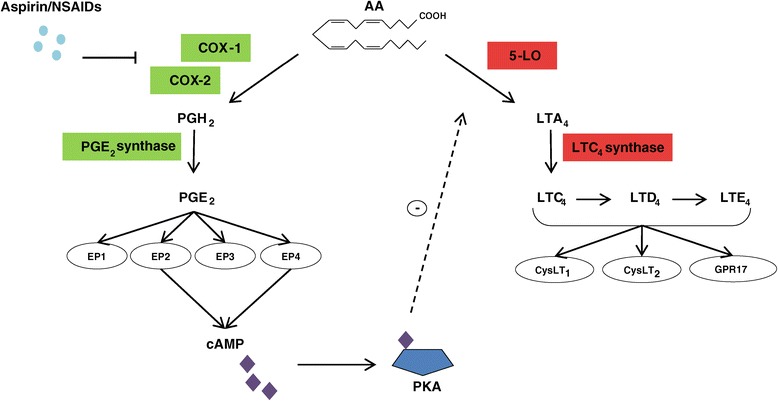Figure 1.

Cyclooxygenase and 5-lipoxygenase pathways with special reference to aspirin exacerbated respiratory disease. Simplified pictogram of biosynthetic pathways of prostaglandin (PG) E2 and cysteinyl leukotrienes (CysLTs). Arachidonic acid (AA) is metabolized by the cyclooxygenase (COX) or 5-lipoxygenase (5-LO) pathways. COX enzymes generate PGH2 which through PGE2 synthase is converted into PGE2. PGE2 couples to four subtypes of G-protein-coupled membrane receptors denominated E-prostanoid (EP) receptors. The activation of EP2 and EP4 receptors generates cyclic adenosine monophosphate (cAMP). This mediator negatively regulates the 5-LO pathway by activating protein kinase A (PKA). AA is also metabolized by the 5-LO pathway to generate leukotriene (LT) A4. LTA4 is subsequently metabolized by LTC4 synthase, which conjugates reduced glutathione into LTC4. LTC4 is metabolized into LTD4, which is then metabolized into LTE4. LTC4, LTD4 and LTE4 are designated as CysLTs. CysLTs bind to CysLT1, CysLT2 and GPR17 receptors. In aspirin exacerbated respiratory disease (AERD) the inhibition of COX pathway accounts for a reduced production of cAMP since the production of PGE2 is diminished. This is a simplified pictogram where some pathways and compounds generated are not mentioned.
